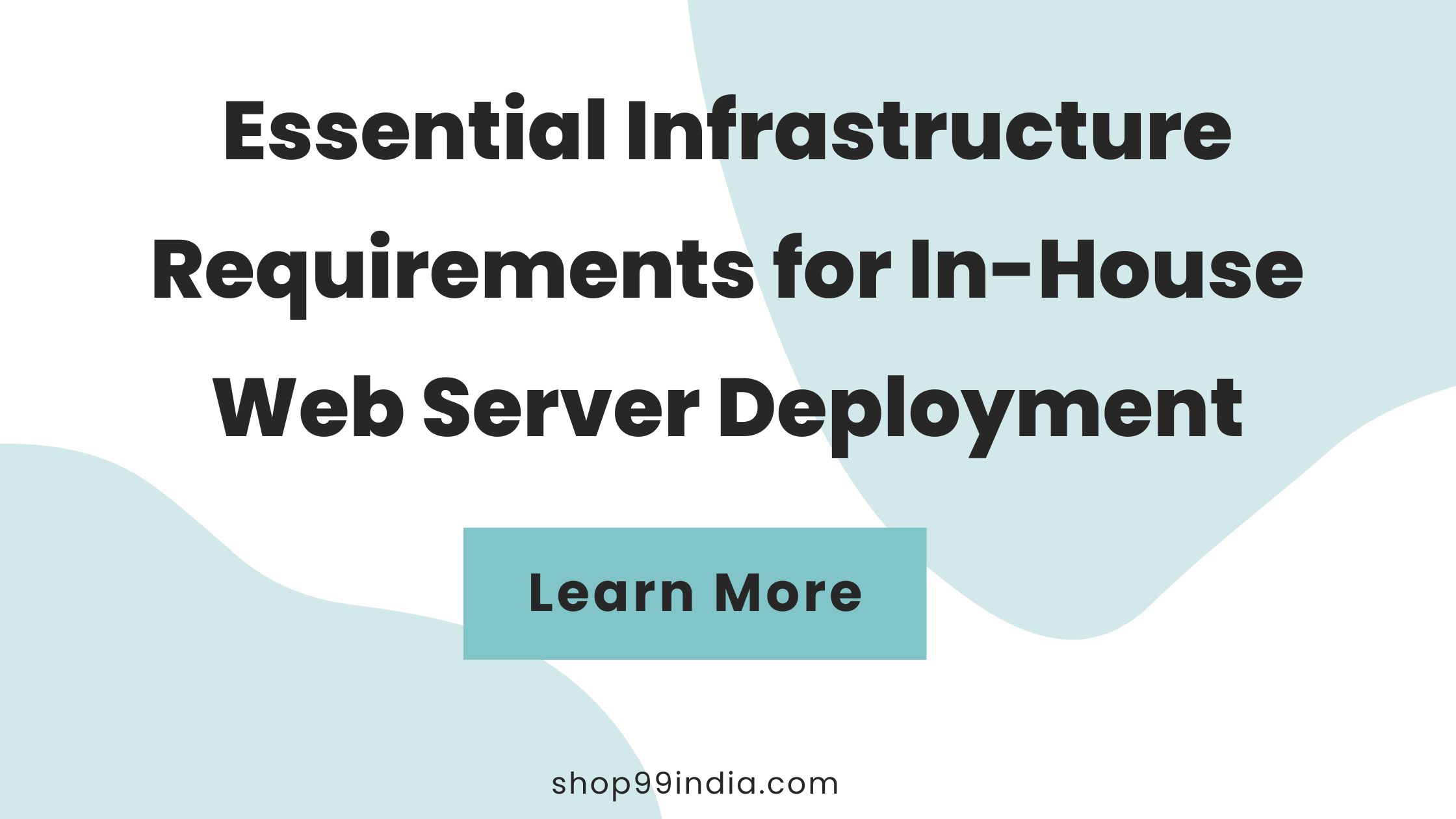Deploying an in-house web server requires a combination of hardware, software, and networking infrastructure. Here are the basic requirements:
Hardware
- Server Hardware: A reliable computer or server with sufficient processing power, memory, and storage to handle the expected load. Consider the following specifications:
- Processor: Multi-core processors (e.g., Intel Xeon, AMD EPYC)
- RAM: At least 8GB (more for high-traffic sites)
- Storage: SSDs for better performance (size depends on your data and web content)
- Network Interface: Gigabit Ethernet or better
- Uninterruptible Power Supply (UPS): To protect against power outages and ensure continuous operation.
- Cooling and Ventilation: Proper cooling mechanisms to maintain optimal operating temperatures.
Software
- Operating System: Linux distributions like Ubuntu Server, CentOS, or Debian are commonly used, but Windows Server can also be an option.
- Web Server Software: Examples include:
- Apache HTTP Server: Popular and versatile.
- Nginx: High performance, especially for handling concurrent connections.
- IIS: For Windows Server environments.
- Database Management System: If your website requires a database.
- Examples: MySQL, PostgreSQL, MongoDB, Microsoft SQL Server.
- Server-Side Scripting Language: Depending on your website’s needs.
- Examples: PHP, Python (Django, Flask), Node.js, Ruby on Rails.
- Firewall and Security Software: To protect your server from unauthorized access.
- Examples: UFW, iptables, fail2ban.
- Backup Software: Regular backups are essential for data protection.
- Examples: rsync, Bacula, Acronis.
Networking
- Static IP Address: Obtained from your ISP for your web server to be accessible from the internet.
- Domain Name: Registered domain name (e.g., myseashell.store) that points to your server’s IP address.
- DNS Configuration: Set up DNS records (A, CNAME) to point your domain to your server’s IP address.
- Router/Firewall Configuration: Forward necessary ports (e.g., 80 for HTTP, 443 for HTTPS) to your server.
- SSL Certificate: For secure HTTPS connections.
- Can be obtained from providers like Let’s Encrypt, Comodo, or purchased from a domain registrar.
Additional Considerations
- Monitoring Tools: For performance and uptime monitoring.
- Examples: Nagios, Zabbix, Prometheus.
- Version Control System: For managing code changes.
- Examples: Git, Subversion.
- Virtualization/Containerization: Optional, but useful for managing multiple environments.
- Examples: Docker, Kubernetes, VMware.
Setting up and maintaining an in-house web server requires technical expertise and careful planning to ensure security, reliability, and performance.

